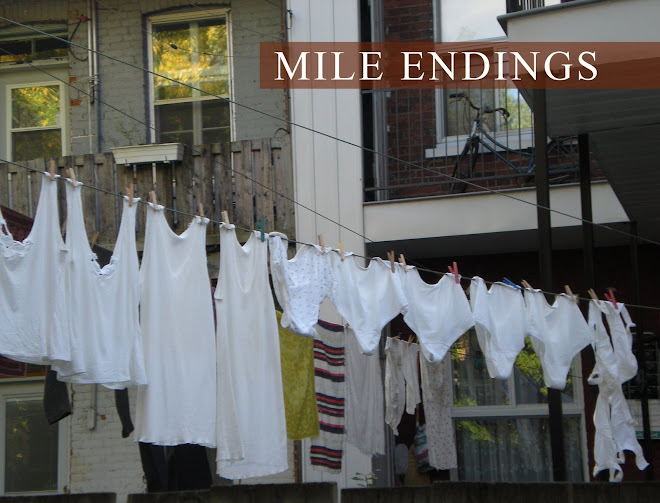
The sign in the window of Maple Leaf Hat and Cap Company reads, "Closing. Everything Must Go."
I can't believe it. I was in here just a month ago. Barry Shinder was sewing caps and telling me that business was slow.
He's being saying that since I first met him a year and a half ago, so it's a scenario I could comfortably imagine repeating itself for years to come. I would go in to buy gift caps and visit my favourite piece of living history (see original blog post) and Barry would be there, sewing away as he's been doing for his entire life.
But he's closing up shop.
The little factory on the first floor of the St.-Laurent triplex is more chaotic than usual. Bolts of fabric are heaped willy-nilly on the cutting tables next to half-sewn caps, boxes of brims and big juice jars full of snaps. Orange For Sale or Sold! stickers dot the old metal shelves and cabinets.
Barry Shinder's manufacturing costs became too high.
Last week his main client, the garment company who contracted him to make their caps, said they couldn't afford his prices anymore.
They offered him a job. So now, instead of sewing caps in the business his father started on the Main 80 years ago, Barry will commute to work in the Chabanel district and get paid a wage. No overhead, no staff (for years he's employed three workers during his busy season).
"I'll be a worker instead of a boss," he says. "I'm losing money here so anything I make will be better. It'll be money with no headaches!"

Barry Shinder doesn't look like a man without headaches. He's losing weight and sleep worrying about how he'll manage to get rid of everything, rent out his 1800 square feet of factory space, pay off his debts and change his life.
"I've never worked anywhere else. This is my whole life." Then he pauses and adds optimistically, "At least I'll get up in the morning knowing I have work. And imagine, an 8-4 job! Instead of seven days a week!"
He'll be bringing his dad's old Singer sewing machine with him to sew caps. "That is one thing I'd never sell," he declares.
While we're talking, the owner of a hat shop in Côte de Neiges comes in to scoop up some stock at reduced prices. Usually, he goes to a wholesaler where all the hats are made in China and sell for a maximum of $5 each. "Five dollars, and that's top quality!" he tells Barry. "A simple cap, like this," he says, picking up a cotton flat cap, "20 cents."
"But the plastic in that brim costs me 45 cents!" Barry objects. He turns to me and sighs. "There you have the whole story."
 A triplex in Mile End is valuable real estate these days, yet Barry says he can't imagine selling. So at least there's that. The rows of sewing machines, the stacks of caps and the dust from decades of fabric-cutting will all be gone. And what will become of the shelves of old blocks he used for shaping caps? At least Barry will still be around.
A triplex in Mile End is valuable real estate these days, yet Barry says he can't imagine selling. So at least there's that. The rows of sewing machines, the stacks of caps and the dust from decades of fabric-cutting will all be gone. And what will become of the shelves of old blocks he used for shaping caps? At least Barry will still be around."If I had to move out of this area it'd kill me," he says of the block where he's lived since 1953 when he was six years old. "I could walk around here blindfolded."
As I leave, wet snow is falling and I notice that just north of Barry's place, in what used to be a neighbourhood tavern full of battered wicker chairs, a fancy new bar has opened up. Change is everywhere. Everything must go.
link to original blog post on Maple Leaf Hat and Cap








